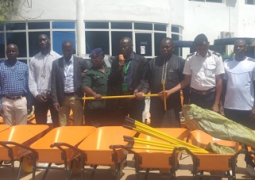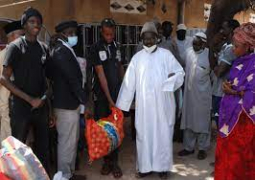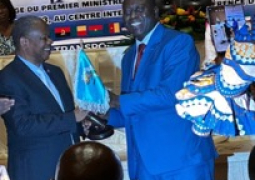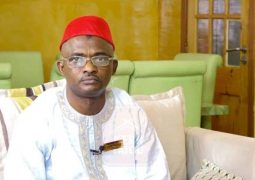
The initiative focuses on strengthening both institutional and local human capacities for safeguarding ICH. The project, supported by the Intangible Cultural Heritage Fund, is among UNESCO-backed initiatives in The Gambia.
Its primary goal is to train communities and cultural practitioners in ICH inventorying, documentation and awareness-raising activities with a particular focus on preservation of the Kankurang Manding Initiatory Rite, which was inscribed on UNESCO’s Representative List of the Intangible Cultural Heritage of Humanity in 2008.
At the launch, Ousman Bah, Governor of CRR, described the initiative as a milestone in the country’s ongoing implementation of the 2003 UNESCO Convention.
“Since the inscription of the Kankurang in 2008 and our ratification of the Convention in 2011, The Gambia has been actively working toward its goals,” he said.
Governor Bah noted that 30 communities, 15 from the north and 15 from the south of the region, have been selected to participate in the project.
“Focal points from each will collaborate with NCAC to document traditional ceremonies, rituals, healing methods, crafts, and stories. This information will be compiled through audiovisuals and photography into a National Register of Intangible Cultural Heritage, a key output of the project”.
He thus commended NCAC and UNESCO for selecting CRR as the pilot site, saying the project's potential value in preserving culture and boosting tourism in the region.
For his part, Hassoum Ceesay, Director General of the National Centre for Arts and Culture, underlined the cultural and spiritual significance of intangible heritage.
“While ICH may not have a physical presence, its impact is profound, it lives in our stories, rituals, and traditional knowledge systems.” he said.
DG Ceesay stressed that proper documentation, whether in text, photo, or video, is crucial for protecting these cultural elements.
“When you document heritage, you’ve already taken a major step toward safeguarding it”, he noted.
He equally pointed out that the resulting national register would serve both as a preservation tool and a resource for integrating culture into national development and tourism strategies.
Furthermore, DG Ceesay maintained that the initiative supports The Gambia’s development agenda and aligns with the African Union’s Agenda 2063.
“It may also pave the way for nominating additional Gambian heritage elements to UNESCO’s international lists, enhancing the country's global cultural recognition”.
Muhammed Saidykhan, Chairman of the Janjanbureh Kankurang and Masks Cultural Festival, welcomed the move, further praising NCAC for its commitment to culture.
“We are proud to be part of this important initiative and will continue to give it our full support over the next 24 months”, he stated.
Saidykhan spoke about the strong collaboration between the community and the NCAC, further highlighting the longstanding support from partners including EMC and the Kankurang Festival.
“This is your home, the heart of the Kankurang tradition welcome and enjoy your stay.” he said.
The event also featured a brief overview of the project by Sanna B. Jarju, the ICH National Focal Point, who explained that this training forms part of The Gambia’s broader efforts to revitalize cultural traditions, especially among the youth who are increasingly distanced from their roots due to formal education systems.
The launch was graced by district chiefs, representatives from the National Commission for UNESCO, NCAC board members, ICH facilitators, community leaders, women councilors, and other stakeholders.
Read Other Articles In Headlines





